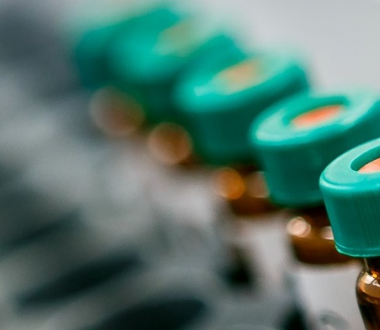
Across the globe, harmful algal blooms caused by cyanobacteria, also known as CyanoHABs, are increasing in frequency, intensity and duration, impacting drinking and recreational waters. In New York State (NYS), they have been reported in >200 lakes, and are responsible for increasing beach closures over the past decade, prompting the New York State Department of Environmental Conservation (NYSDEC) to expand lake monitoring programs to include CyanoHAB monitoring.
CyanoHABs are a growing public health concern due to the array of toxins they can produce. Some cyanobacteria produce hepatotoxins (microcystin, cylindrospermopsin), some produce neurotoxins (saxitoxin, anatoxin-a), some genera can produce multiple toxins, and yet others are not toxic at all.
CyanoHABs can cause diarrhea, nausea and vomiting, rashes, throat irritation, asthma-like reactions, and according to the Centers for Disease Control and Prevention, “pets and livestock can get very sick and die within hours to days after swallowing cyanobacterial toxins.”
Two Wadsworth Center laboratories are working with NYSDEC to develop and incorporate rapid cyanotoxin testing methods into their lake monitoring programs. With approximately 16,000 waterbodies across NYS, and our dependence on lakes for drinking water and recreation, these rapid cyanotoxin detection methods would benefit water managers, environmental agencies, and the citizens and tourists of NYS.
Current NYS regulation requires testing for microcystin, the most common cyanotoxin found in lakes. However, some future climate change scenarios suggest changes in cyanobacteria community structure and toxin production, and NYS must be prepared to monitor for additional cyanotoxins. With current technologies, this would require multiple assays to determine which, if any, toxins are present, and these assays are time intensive, expensive and require specialized training to perform.
Within the Wadsworth Center’s Division of Environmental Health Sciences (DEHS), the Laboratory of Environmental Biology (LEB) has developed a digital droplet polymerase chain reaction (ddPCR) cyanotoxin gene assay which will act as a screening tool to determine the potential for the cyanobacteria to produce various cyanotoxins. Knowing which bodies of water have the potential to produce harmful toxins allows for targeted monitoring, saving valuable resources.
This screening tool will be used to triage samples sent to the DEHS Laboratory of Organic Analytical Chemistry (LOAC), which has developed a liquid chromatography high resolution mass spectrometry (LC-HRMS) method for toxin detection in non-potable water. The first test determines if there are genes present for the cyanobacteria to be able to produce a toxin, and this second test indicates if that toxin is actually being produced. This new LC-HRMS assay has several advantages over currently published and approved methods:
- More sensitive - down to the level of parts per trillion
- Less subject to interferences
- Distinguishes among related microcystins, which differ significantly in their relative toxicity
- Quantifies 14 common cyanotoxin compounds which have commercially available analytical standards
- Screens an additional 230 compounds
- Performs all testing in a single run
- High-throughput capacity of 50-100 samples per day compared to today’s tests which require three days to process 8-10 samples
LEB and LOAC have successfully applied these newly developed methods to analyze more than one hundred samples collected from NYS lakes between 2020-2021.
This summer the Department of Environmental Conservation will provide the Wadsworth Center with samples for cross-laboratory validation of the methods. Once validated, these methods will be used to survey lakes across NYS for various cyanotoxins, allowing government agencies and water managers to make informed decisions in a faster timeframe to protect the health of New Yorkers.
_________________________________________________________________________
Patrick Parsons, PhD-contract principal investigator
Laboratory of Environmental Biology
- Theresa Hattenrath, PhD - contract project manager and LEB principal investigator
- Christopher Tucker – project team member
- Madelyn Caldwell Association of Public Health Laboratory (APHL) Fellow awarded Honorable Mention for Best Poster on this topic at this year’s APHL Conference.
Laboratory of Organic and Analytical Chemistry
- Lingyun Li, PhD – LOAC principal investigator
- Shijun Lu, PhD - project team member
- Lorie Durocher - project team member
- Anthony Arancio - APHL Fellow
NYSDEC also funded the installation of a High Resolution Orbitrap Mass Spectrometer in LOAC.